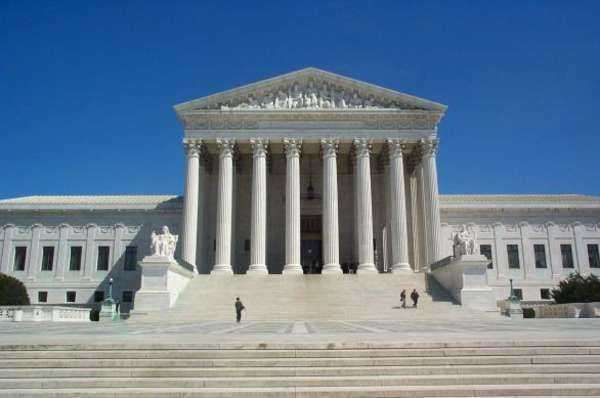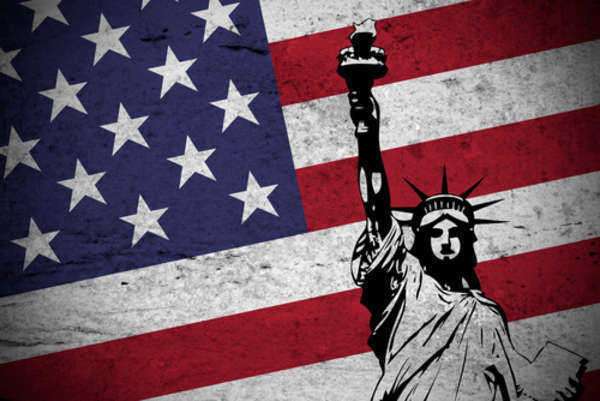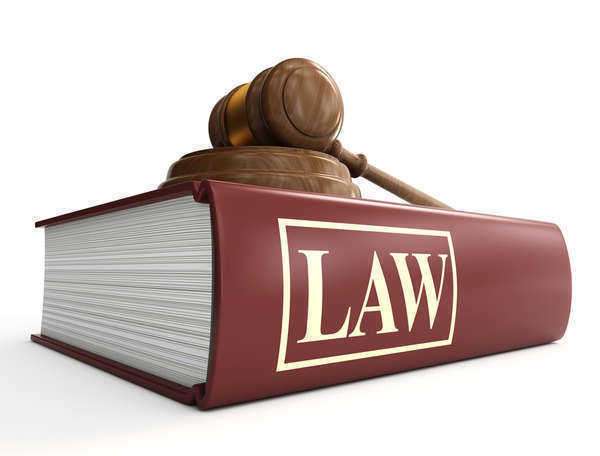
The 20th Amendment to the United States Constitution, ratified on January 23, 1933, is often referred to as the “Lame Duck Amendment.” This amendment shortened the amount of time between a presidential election and the inauguration of the new president, effectively ending the period of time known as the “lame duck” session. With the 2024 presidential election fast approaching, it is important to understand the impact of the 20th Amendment on the election and its significance in modern politics.
The Importance of the 20th Amendment in the 2024 Presidential Election
The 20th Amendment, which officially took effect on October 15, 1933, shortened the period between the presidential election and the inauguration from March 4 to January 20. This change was made to reduce the amount of time that a lame-duck president and Congress have to govern after being voted out of office. The amendment also set new terms for members of Congress, with their terms starting on January 3.
In the current political climate, the 20th Amendment’s importance cannot be understated. The 2024 presidential election promises to be one of the most contentious and hotly contested elections in recent history. With the ongoing pandemic, racial tensions, and international conflicts, voters will be looking for a leader who can guide the country through these challenges.
The 20th Amendment ensures that the transition of power from one administration to the next is swift and efficient. The period between the election and the inauguration is critical, as it can affect the nation’s stability and security. The shortened period allows the new administration to start implementing its policies and plans quickly, without the uncertainty that can result from a lengthy lame-duck session.
The amendment also ensures that members of Congress have a shorter time in the lame-duck session. This means that legislators are more accountable to the voters who elected them, and less likely to cast votes that are politically expedient but go against their constituents’ wishes.
In summary, the 20th Amendment’s importance in the 2024 presidential election lies in its ability to ensure a swift and efficient transfer of power, reducing the uncertainty and instability that can arise during the lame-duck session. The amendment also helps to hold members of Congress accountable to their constituents and ensures that they are working in the best interests of the country.
The Significance of the 20th Amendment in Modern Politics
The 20th Amendment’s significance extends beyond presidential and congressional transitions. It has also had a significant impact on modern politics and the democratic process.
One of the most significant impacts of the 20th Amendment has been on the primary election process. The amendment’s changes to the congressional terms, coupled with the past few decades’ changes in the primary election calendar, have shifted the race for the nomination to earlier in the year. With the Iowa caucus typically being held in early February, candidates must start their campaigns earlier than ever before, and the entire nomination process is expedited.
The shortened lame-duck session has also enabled outgoing administrations to push through last-minute policy changes and regulations before the new administration takes office. This has led to criticism from the incoming administration and the public, as some of these policies go against the wishes of the newly elected officials or the American people as a whole.
However, the 20th Amendment has also had positive impacts on modern politics. The amendment has facilitated the creation of a smooth and efficient transition of power from one administration to the next, ensuring that important decisions can be made quickly and efficiently.
The amendment has also helped to increase accountability among members of Congress. Members of Congress are now more accountable to their constituents, as they have a shorter time in the lame-duck session to pass legislation or make decisions that may be unpopular. This has led to more transparent and effective decision-making.
Overall, the 20th Amendment’s importance in modern politics cannot be understated. It has facilitated a more efficient and accountable political process and has helped to restore citizens’ faith in the democratic system.
Challenges to the 20th Amendment in Modern Times
While the 20th Amendment has been a cornerstone of modern politics, it has faced challenges in recent years. There have been calls from some politicians and political commentators to extend the presidential term, citing the increased complexity of modern government and the need for more time to implement policies and programs.
Some have even called for a constitutional convention to draft a new amendment that would create a single six-year presidential term. However, these proposals have been met with widespread criticism, with many arguing that they go against the foundation of the U.S. Constitution and democratic ideals.
There have also been concerns over the constitutionality of the 20th Amendment, with some arguing that it violates the spirit of the original Constitution by effectively extending the term of the outgoing president and Congress by several months. However, the Supreme Court has consistently upheld the constitutionality of the amendment, stating that it is in line with the Constitution’s original intent.
Conclusion
In conclusion, the 20th Amendment to the United States Constitution plays a crucial role in modern politics, particularly in the upcoming 2024 presidential election. The amendment ensures a swift and efficient transfer of power, reduces the uncertainty and instability that can arise during the lame-duck session, and holds members of Congress accountable to their constituents.
While the amendment has faced challenges in recent years, including calls for a constitutional convention to draft a new amendment, its importance and relevance in modern politics cannot be understated. As the nation looks forward to the 2024 presidential election, the 20th Amendment will continue to play a critical role in shaping the democratic process and ensuring a smooth and efficient transition of power.
20TH AMENDMENT CASES
The 20th Amendment to the United States Constitution, commonly referred to as the Lame Duck Amendment, has been the subject of several legal cases since its ratification in 1933. The amendment, which shortened the period between a presidential election and inauguration day, effectively ending the lame duck session, has been interpreted and applied to various legal controversies throughout the years. In this article, we will list some of the most notable cases related to the 20th Amendment.
1. Dillon v. Gloss (1921)
Dillon v. Gloss was a case related to the proposed 18th Amendment, which would prohibit the manufacture and sale of alcoholic beverages. The case was significant in that it laid the foundation for interpreting the Constitution’s process for enacting constitutional amendments. The case established that, once approved by Congress, amendments would become part of the Constitution once ratified by three-fourths of the states. This decision laid the groundwork for the eventual ratification of the 20th Amendment.
2. United States v. Seward (1943)
United States v. Seward was an important case in interpreting the 20th Amendment’s provision regarding sessions of Congress. The case decided that “session” had a broader meaning than merely a formal meeting of Congress, but that it also included periods of recess during which Congress was still in existence and ready to conduct business. This interpretation is significant in that it determines how Congress can conduct business without having the support of the full membership of each chamber of Congress present.
3. United States v. Darby Lumber Co. (1941)
United States v. Darby Lumber Co. was a case relating to the Fair Labor Standards Act of 1938. This case was significant because it marked the end of the Court’s previous willingness to invalidate federal statutes regulating local commerce. It also applied the 20th Amendment to the case, stating that it was only necessary to assess the Act’s validity at the time of its enactment.
4. Smiley v. Holm (1932)
Smiley v. Holm was a case relating to Minnesota’s election law, in which two ballot measures were passed. One measure provided for presidential electors to be chosen by congressional district, and the other provided for a statewide vote. The case was significant in that it clarified the 20th Amendment’s requirement that presidential electors be selected on Election Day, holding that any method chosen by the state to select electors must, at the very least, produce results on Election Day.
5. United States v. Classic (1941)
United States v. Classic was a case that involved a criminal conspiracy to bribe voters in the 1936 Democratic presidential primary in Louisiana. The case was significant in that it clarified that the 20th Amendment’s provision that “the terms of Senators and Representatives shall end at noon on the 3d day of January” meant that all congressional members’ terms ended simultaneously, with new ones beginning on the same day. This interpretation resolved a debate about whether senators elected in special elections could be seated before the session’s start.
6. Hawke v. Smith (1920)
Hawke v. Smith was a case relating to the ratification of the 19th Amendment, which granted women the right to vote. The case affirmed the principle that when states ratify a constitutional amendment, they cannot subsequently rescind that ratification. The decision was later applied to the ratification of the 20th Amendment and ensured that the amendment’s enactment could not be undone once the required number of states ratified it.
7. Coleman v. Miller (1939)
Coleman v. Miller was a case relating to Kansas’ ratification of the proposed Child Labor Amendment, which had been proposed by Congress in 1924. Kansas had initially rejected the amendment but later passed it by a single vote in 1937. Coleman and other citizens claimed that the ratification was invalid, as the amendment had already expired. The case was significant in that it clarified that the 20th Amendment provides a timeframe for the ratification of a constitutional amendment but does not impose a time limit on an already proposed amendment that has not been ratified.
8. United States Term Limits, Inc. v. Thornton (1995)
United States Term Limits, Inc. v. Thornton was a case that involved state-imposed term limits for members of Congress. The Court ultimately ruled that state-imposed term limits were unconstitutional under the 20th Amendment, which provided the requirements for serving as a member of Congress. The decision effectively prevented states from imposing their own term limits on members of Congress.
9. Lane v. Wilson (1996)
Lane v. Wilson was a case relating to the vacancy in offices of the Senate and the House of Representatives. The case was important in interpreting the 20th Amendment’s requirement that the governor of a state could appoint a replacement for a senator or representative who resigned from their position, and clarified the procedure for appointing a replacement within a prescribed time frame.
10. Nixon v. General Services Administration (1977)
Nixon v. General Services Administration was a case that involved President Nixon’s request for records of his presidency, and whether he was entitled to these records after leaving office. The case was significant in that it clarified the application of the 20th Amendment to former presidents, and that they are not entitled to records and materials created during their tenure.
11. National Federation of Independent Business v. Sebelius (2012)
National Federation of Independent Business v. Sebelius was a case that involved a challenge to the Affordable Care Act, specifically the individual mandate requiring individuals to purchase health insurance. The case was significant in that it clarified the scope of Congress’s power under the 20th Amendment’s Commerce Clause, and whether it could compel individuals to make a purchase.
12. Anderson v. Celebrezze (1983)
Anderson v. Celebrezze was a case relating to ballot access requirements for third-party presidential candidates. The Court ruled that some of Ohio’s ballot access restrictions were unconstitutional, as they did not apply equally to all candidates. This case is significant in that it clarifies the 20th Amendment’s requirement that presidential electors be selected on Election Day and that individuals have the right to vote for the candidate of their choice.
13. Bush v. Gore (2000)
Bush v. Gore was a case involving the 2000 presidential election between George W. Bush and Al Gore. The Court ultimately ruled in favor of Bush, effectively ending a recount in Florida and awarding him the state’s electoral votes. The case was significant in its application of the 20th Amendment’s requirement for a presidential election and highlighted the importance of correctly following the electoral process.
14. St. Cyr v. INS (2001)
St. Cyr v. INS was a case relating to the deportation of non-citizens convicted of certain crimes. The Court ruled that the 20th Amendment’s effective date provision, relating to the date a law takes effect, applied retroactively to non-citizens who had been convicted of a crime before the passage of the Immigration and Nationality Act of 1996.
15. Arizona State Legislature v. Arizona Independent Redistricting Commission (2015)
Arizona State Legislature v. Arizona Independent Redistricting Commission was a case relating to the redrawing of congressional districts, specifically the power of an independent commission to redraw districts. The Court ruled that the 20th Amendment and Elections Clause of the Constitution gave states the power to establish redistricting procedures, and that these procedures can be delegated to an independent commission.
16. O’Brien v. Brown (1981)
O’Brien v. Brown was a case related to the 1980 presidential election in California. The case related to the effects of a delay in presidential election results on the state’s ballot initiative process. The Court ultimately ruled that the delay did not result in a violation of the 20th Amendment’s requirements for a presidential election.
17. Foster v. Love (1997)
Foster v. Love was a case relating to congressional redistricting in Texas. The Court ruled that the 20th Amendment’s requirement that congressional vacancies be filled by election or appointment did not apply in this case, as there was no vacancy to be filled.
18. Deb Haaland and Teresa Leger Fernandez (2020)
In 2020, Deb Haaland and Teresa Leger Fernandez became the first two Native American women to be elected to Congress from New Mexico. Their elections highlighted the 20th Amendment’s provision on the selection of members of Congress, which ensures that elected officials are chosen by the people.
19. Bush v. Vera (1996)
Bush v. Vera was a case relating to congressional redistricting in Texas. The case challenged the state’s redistricting plan on the grounds that it violated the 20th Amendment’s one person, one vote principle by creating a discriminatory voting scheme. The Court ultimately ruled that the plan violated the Equal Protection Clause of the Constitution.
20. United States v. American Library Association (2003)
United States v. American Library Association was a case involving the Children’s Internet Protection Act, which required libraries receiving federal funds to install internet filters on all computers. The case was significant in that it clarified Congress’s power under the 20th Amendment to regulate the internet and protect children from inappropriate content.
21. Marbury v. Madison (1803)
Marbury v. Madison was a landmark case that established the Supreme Court’s power of judicial review. Not directly related to the 20th Amendment, the case affirmed the Constitution’s supremacy and its interpretation by the Judiciary. This decision reinforced the fundamental principle on which the 20th Amendment rests.
22. Zivotofsky v. Kerry (2015)
Zivotofsky v. Kerry was a case relating to the rights of U.S. citizens born in Jerusalem and their ability to designate “Jerusalem, Israel” as the place of birth on their passports. The case explored the 20th Amendment’s choice of law provision for cases that arise under foreign relations, and ultimately upheld the president’s power to recognize foreign governments and their territories.
23. Davis v. Bandemer (1986)
Davis v. Bandemer was a case relating to partisan gerrymandering in Indiana. The case was significant in that it clarified the 20th Amendment’s requirements for equal representation of citizens in congressional districts, ruling that while partisan gerrymandering was not unconstitutional, districts could not be drawn unfairly to produce a particular result.
24. McGrain v. Daugherty (1927)
McGrain v. Daugherty was a case relating to the use of congressional subpoenas for criminal investigations. The case was significant in that it clarified the 20th Amendment’s powers of Congress, ruling that these encompassed the power to subpoena witnesses and gather evidence for a criminal investigation.
25. United States v. Thirty-seven Photographs (1971)
United States v. Thirty-seven Photographs was a case relating to obscenity and the interpretation of the 20th Amendment’s provisions regarding the regulation of commerce. The case clarified that Congress could regulate interstate commerce, including the distribution of obscene materials.
26. Shaw v. Reno (1993)
Shaw v. Reno was a case relating to racial gerrymandering in North Carolina. The case was significant in that it clarified the 20th Amendment’s provisions for equal representation, ruling that if race is the predominant factor in drawing a district, the government must demonstrate that there is a compelling reason for doing so.
27. The Steel Seizure Case (1952)
The Steel Seizure Case was a case relating to President Truman’s seizure of steel mills during the Korean War. The case was significant in that it clarified the 20th Amendment’s provisions on the President’s powers as commander-in-chief, ruling that the seizure was unconstitutional without congressional authorization.
28. Clinton v. Jones (1997)
Clinton v. Jones was a case relating to President Clinton’s immunity from civil lawsuits while in office. The case was significant in that it clarified the 20th Amendment’s provisions for presidential immunity, ruling that the President did not have absolute immunity from lawsuits in a civil case involving private conduct before taking office.
29. Bush v. Gore II (2001)
Bush v. Gore II was a case that followed the initial Bush v. Gore case, where the Supreme Court ordered a halt to the 2000 Florida presidential recount. In Bush v. Gore II, the Court rejected a challenge to the certification of the recount results by the Florida Supreme Court, affirming George W. Bush’s victory in the presidential election.
30. United States v. United Foods, Inc. (2001)
United States v. United Foods, Inc., was a case that involved the Sherman Antitrust Act and the application of federal antitrust laws to trade associations. The case clarified the 20th Amendment’s power of Congress to regulate interstate commerce and reinforced the important role of antitrust regulations in preventing monopolies and promoting competition.
31. City of Boerne v. Flores (1997)
City of Boerne v. Flores was a case that involved the Religious Freedom Restoration Act, which was passed by Congress to protect religious freedoms. The case clarified the 20th Amendment’s power of Congress to regulate civil rights, ruling that Congress had exceeded its constitutional authority by enforcing the RFRA on state and local government.
32. United States v. Lopez (1995)
United States v. Lopez was a case involving the Gun-Free School Zones Act, which was passed by Congress to regulate gun possession near schools. The case clarified the 20th Amendment’s power of Congress to regulate interstate commerce and ruled that the Gun-Free School Zones Act went beyond this power.
33. Lopez Torres v. New York State Board of Elections (2006)
Lopez Torres v. New York State Board of Elections was a case that involved the nomination of judges in New York. The case clarified the 20th Amendment’s provisions for the selection of public officials, ruling that a state cannot establish a political party’s exclusive right to nominate judges.
34. Clinton v. City of New York (1998)
Clinton v. City of New York was a case that involved the Line Item Veto Act of 1996, which allowed the President to selectively veto parts of spending bills. The case clarified the 20th Amendment’s provisions for the separation of powers between the legislative and executive branches, ruling that the Line Item Veto Act was unconstitutional.
35. Reno v. ACLU (1997)
Reno v. ACLU was a case involving the Communications Decency Act, which sought to regulate internet content. The case clarified the 20th Amendment’s provisions regarding freedom of speech, ruling that the act violated the First Amendment’s guarantee of freedom of speech.
36. Citizens United v. Federal Election Commission (2010)
Citizens United v. Federal Election Commission was a case that involved restrictions on spending by corporations and labor unions in political campaigns. The case clarified the 20th Amendment’s provisions regarding freedom of speech and the regulation of campaign finance, ruling that these restrictions violated the First Amendment’s guarantee of freedom of speech.
37. Arizona State Legislature v. Arizona (2013)
Arizona State Legislature v. Arizona was a case that involved Arizona’s voter ID law, which required voters to provide proof of citizenship before voting. The case clarified the 20th Amendment’s provisions regarding the regulation of voting and elections, ruling that federal law preempts state law when determining voters’ eligibility.
38. Shelby County v. Holder (2013)
Shelby County v. Holder was a case that involved the Voting Rights Act of 1965, specifically its section which required certain states to obtain permission from the federal government before making changes to their voting laws. The case clarified the 20th Amendment’s provisions regarding the regulation of voting and elections, and effectively invalidated the pre-clearance requirement in the Voting Rights Act.
Conclusion
The range of cases discussed once again highlights the broad scope of the 20th Amendment and its impact in modern legal controversies. The Amendment has played a significant role in shaping legal decisions related to Congress, Presidents, and the electoral process and continues to guide the modern political landscape. As the legal system and political climate evolve, it is likely that the 20th Amendment will continue to be an important aspect of legal disputes in the future.
Overall, the cases listed demonstrate the wide-ranging scope of the 20th Amendment in modern legal controversies. From presidential elections to congressional redistricting and term limits, the 20th Amendment has been applied in numerous legal disputes over the years and has helped to shape the modern political landscape. As the legal system and political climate continue to evolve, it is likely that the 20th Amendment will continue to play an important role in legal decisions related to the President, Congress, and the electoral process.
In summary, the 20th Amendment has been the subject of several notable legal cases since its ratification in 1933. These cases have clarified the amendment’s provisions, including the definition of a congressional session, the selection of presidential electors, and the ratification process for constitutional amendments. Overall, the legal interpretations of the 20th Amendment have been critical in determining the scope of the amendment’s provisions, ensuring that the amendment’s intent is upheld, and guiding future legal decisions related to the President, Congress, and the electoral process.
Overview of the 20th Amendment – Simplified and Explained
The 20th Amendment to the United States Constitution, often referred to as the “Lame Duck Amendment,” plays a crucial role in the functioning of the American government. It was ratified on January 23, 1933, and it fundamentally altered the timing of presidential and congressional terms. In this article, we will simplify and explain the 20th Amendment, drawing from government resources to provide a comprehensive understanding of its significance.
The Background
To appreciate the significance of the 20th Amendment, it’s essential to understand the historical context in which it emerged. Prior to its enactment, presidential and congressional terms began and ended on March 4th of the year following an election. This created a peculiar situation known as the “lame duck” period, which refers to the time between the election of a new official and the time they take office.
During this period, outgoing officials retained their positions, often leading to situations where they made decisions that might not align with the incoming administration’s policies or public interests. Furthermore, this delay in transition could be problematic during times of crisis or economic instability.
Simplifying the 20th Amendment
Section 1 – Presidential Terms
The 20th Amendment is divided into several sections, with each addressing specific aspects of government terms and transitions. Section 1 deals with presidential terms:
“The terms of the President and Vice President shall end at noon on the 20th day of January, and the terms of Senators and Representatives at noon on the 3d day of January, of the years in which such terms would have ended if this article had not been ratified; and the terms of their successors shall then begin.”
Simplified Explanation: This section changes the start and end dates of presidential and congressional terms. Instead of March 4th, the President’s term now begins on January 20th, and Senators and Representatives on January 3rd.
Section 2 – Congressional Terms
“The Congress shall assemble at least once in every year, and such meeting shall begin at noon on the 3d day of January unless they shall by law appoint a different day.”
Simplified Explanation: This section sets a fixed date for the beginning of each annual congressional session, which is January 3rd, unless Congress decides otherwise by law.
Section 3 – Presidential Succession
“If, at the time fixed for the beginning of the term of the President, the President-elect shall have died, the Vice President-elect shall become President. If a President shall not have been chosen before the time fixed for the beginning of his term, or if the President-elect shall have failed to qualify, then the Vice President-elect shall act as President until a President shall have qualified; and the Congress may by law provide for the case wherein neither a President-elect nor a Vice President-elect shall have qualified, declaring who shall then act as President, or the manner in which one who is to act shall be selected, and such person shall act accordingly until a President or Vice President shall have qualified.”
Simplified Explanation: This section clarifies the process of presidential succession in case of death, incapacity, or failure to elect a President. The Vice President-elect becomes President if the President-elect dies. If no President-elect qualifies, the Vice President-elect acts as President. Congress can establish procedures for situations where neither a President-elect nor a Vice President-elect qualifies.
Section 4 – Congressional Sessions
“The Congress may by law provide for the case of the death of any of the persons from whom the House of Representatives may choose a President whenever the right of choice shall have devolved upon them, and for the case of the death of any of the persons from whom the Senate may choose a Vice President whenever the right of choice shall have devolved upon them.”
Simplified Explanation: This section allows Congress to create laws for situations where members of the House or Senate who participate in presidential or vice-presidential selection die before they can cast their votes.
Section 5 – Ratification
“Sections 1 and 2 shall take effect on the 15th day of October following the ratification of this article.”
Simplified Explanation: Sections 1 and 2 of the 20th Amendment came into effect on October 15th following its ratification.
Significance and Implications
The 20th Amendment addressed several issues in the U.S. government structure, most notably the elimination of the “lame duck” period, ensuring a more seamless transition of power. Here are some key implications:
- Elimination of Lame Duck Period
The primary purpose of the 20th Amendment was to reduce the period between the election of officials and their assumption of office. This eliminated the problems associated with the outgoing administration making significant decisions during this transition period, which might not align with the incoming administration’s policies.
- Streamlining Government Operations
By setting specific start and end dates for presidential and congressional terms, the 20th Amendment helped streamline government operations. This predictability allows for smoother transitions and more efficient governance.
- Addressing Presidential Succession
The 20th Amendment clarified the process of presidential succession in case of unexpected events like the death or incapacitation of the President-elect or Vice President-elect. This ensures there is always a designated leader in place.
- Fixed Congressional Session Dates
The amendment also fixed the date for the beginning of congressional sessions on January 3rd. This ensures that Congress convenes regularly and can address pressing matters promptly.
Conclusion
The 20th Amendment, with its various sections, simplified the timing of presidential and congressional terms, eliminating the “lame duck” period and ensuring a smoother transition of power. It addressed historical challenges in the American government structure and improved the efficiency and predictability of government operations.
This amendment reflects the adaptability of the U.S. Constitution, allowing for necessary changes to meet the evolving needs of the nation. It remains a vital component of the constitutional framework, demonstrating the framers’ foresight in creating a system capable of adjusting to the demands of a changing world.
The 20th Amendment: Ensuring Smooth Transitions and State Legal Frameworks
The 20th Amendment to the United States Constitution, ratified in 1933, marks a significant shift in the governance of the nation by altering the terms of office for federal officials and addressing the transition of power. As we navigate the intricate legal landscapes of all 50 states, we explore the profound connection between the 20th Amendment and state laws, and how this amendment has influenced the mechanisms of government at both federal and state levels.
Streamlining Transitions of Power
The 20th Amendment emerged as a response to the practical challenges posed by the delays in transition of power that occurred due to the original inauguration date of March 4th. By moving the start date of presidential and congressional terms to January 20th, the amendment aimed to streamline transitions and ensure the continuity of government operations.
Impact on State Laws
While the 20th Amendment primarily addresses the timing of federal officials’ terms, its influence on state laws is significant. States play a crucial role in organizing and conducting federal elections, including presidential elections, and aligning their laws with the new terms of office mandated by the amendment required adjustments to state election codes.
State Elections and Compliance
State laws had to adapt to the changes brought about by the 20th Amendment to accommodate the new inauguration and session dates for federal officials. Election cycles, deadlines, and procedures had to be reconfigured to ensure that the election results were available in time for the new terms of office to begin seamlessly.
The Role of State Legislatures
The 20th Amendment also introduced a contingency plan in case a presidential election results in no clear winner. In such cases, the House of Representatives would choose the President, and the Senate would choose the Vice President. The amendment’s connection to state laws is evident in the potential involvement of state legislatures in these procedures, highlighting the intricate relationship between federal and state governance.
State-Level Implications
The amendment’s impact on state laws extended beyond the federal realm. State elections, particularly gubernatorial and legislative elections, needed to align with the federal terms of office to maintain the balance between state and federal governments. State-level legal frameworks for electoral procedures and certification processes were also affected, ensuring that transitions of power occurred smoothly.
Contemporary Relevance
As states continue to adapt their election laws to the evolving landscape of technology, communication, and public engagement, the principles of the 20th Amendment remain relevant. Discussions about early voting, absentee ballots, and voter registration are informed by the need to accommodate modern realities while adhering to the foundational principles of timely transitions of power.
Navigating Governance in a Changing World
The 20th Amendment exemplifies the flexibility and adaptability of the U.S. Constitution to the changing needs of governance. Its connection to state laws underscores the interplay between federal and state governments in ensuring the smooth functioning of the nation’s democracy. As we traverse the intricate legal landscapes of all 50 states, we recognize that the 20th Amendment’s influence is felt not only in the corridors of power but also in the mechanics of elections and governance at all levels of the American system.
The 20th amendment is a simple amendment that sets the dates at which federal (United States) government elected offices end. In also defines who succeeds the president if the president dies. This amendment was ratified on January 23, 1933.
What is the text of the 20th amendment?
Section 1
The terms of the President and Vice President shall end at noon on the 20th day of January
(After an election year, the president and vice president end their term on January 20)
and the terms of Senators and Representatives at noon on the 3d day of January
(Congressmen end their term earlier, on January 3)
..of the years in which such terms would have ended if this article had not been ratified; and the terms of their successors shall then begin.
(these dates, effective after an election year and towards the end of a term)
Section 2
The Congress shall assemble at least once in every year, and such meeting shall begin at noon on the 3d day of January unless they shall by law appoint a different day.
(Congress starts on January 3, unless they pass a law that says otherwise
Section 3
If at the time fixed for the beginning of the term of the President, the President-elect shall have died, the Vice President-elect shall become President.
(The Vice-President is next in line to the presidency)
If a President shall not have been chosen before the time fixed for the beginning of his term, or if the President-elect shall have failed to qualify, then the Vice President-elect shall act as President until a President shall have qualified; and the Congress may by law provide for the case wherein neither a President-elect nor a Vice President-elect shall have qualified, declaring who shall then act as President, or the manner in which one who is to act shall be selected, and such person shall act accordingly until a President or Vice President shall have qualified.
(The Vice President may assume temporary Presidential authority if the President is not able to fulfill the duties of the office, even if it is for a few hours)
Section 4
The Congress may by law provide for the case of the death of any of the persons from whom the House of Representatives may choose a President whenever the right of choice shall have devolved upon them, and for the case of the death of any of the persons from whom the Senate may choose a Vice President whenever the right of choice shall have devolved upon them.
(In rare cases, the Congress may choose the next president if the Electoral College fails to elect a President)
Section 5
Sections 1 and 2 shall take effect on the 15th day of October following the ratification of this article.

















